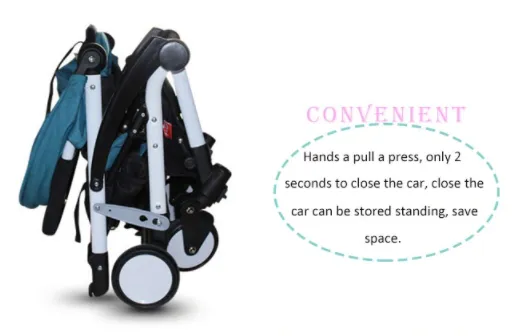
- Afrikaans
- Albanian
- Amharic
- Arabic
- Armenian
- Azerbaijani
- Basque
- Belarusian
- Bengali
- Bosnian
- Bulgarian
- Catalan
- Cebuano
- Corsican
- Croatian
- Czech
- Danish
- Dutch
- English
- Esperanto
- Estonian
- Finnish
- French
- Frisian
- Galician
- Georgian
- German
- Greek
- Gujarati
- Haitian Creole
- hausa
- hawaiian
- Hebrew
- Hindi
- Miao
- Hungarian
- Icelandic
- igbo
- Indonesian
- irish
- Italian
- Japanese
- Javanese
- Kannada
- kazakh
- Khmer
- Rwandese
- Korean
- Kurdish
- Kyrgyz
- Lao
- Latin
- Latvian
- Lithuanian
- Luxembourgish
- Macedonian
- Malgashi
- Malay
- Malayalam
- Maltese
- Maori
- Marathi
- Mongolian
- Myanmar
- Nepali
- Norwegian
- Norwegian
- Occitan
- Pashto
- Persian
- Polish
- Portuguese
- Punjabi
- Romanian
- Russian
- Samoan
- Scottish Gaelic
- Serbian
- Sesotho
- Shona
- Sindhi
- Sinhala
- Slovak
- Slovenian
- Somali
- Spanish
- Sundanese
- Swahili
- Swedish
- Tagalog
- Tajik
- Tamil
- Tatar
- Telugu
- Thai
- Turkish
- Turkmen
- Ukrainian
- Urdu
- Uighur
- Uzbek
- Vietnamese
- Welsh
- Bantu
- Yiddish
- Yoruba
- Zulu
Aug . 14, 2024 19:46 Back to list
Tips for Effectively Adjusting the Shifter on Your Mountain Bike for Optimal Performance
Adjusting the Shifter on a Mountain Bike A Comprehensive Guide
Mountain biking is not just about endurance and skill; it’s also about having a bike that functions optimally. One critical aspect of bike maintenance is adjusting the shifter. A well-adjusted shifter ensures smooth gear transitions, allowing riders to tackle challenging terrains with ease. In this article, we will explore the importance of shifter adjustment and provide a step-by-step guide on how to do it effectively.
Understanding the Shifter
The shifter is a device that allows a rider to change gears on their bike. On a mountain bike, this is essential because varying terrains often require different gear ratios. A properly functioning shifter ensures you can switch gears without hesitation or misalignment, enhancing your overall riding experience.
Why Adjust the Shifter?
Over time, and with frequent use, the cable and housing that connect the shifter to the derailleurs can stretch or wear out. This may lead to several issues
1. Poor Gear Shifting If the shifter isn’t adjusted properly, you may experience skipping gears or difficulty changing gears altogether. 2. Chain Misalignment A misaligned chain can lead to excessive wear on both the chain and the cassette, ultimately costing more in repairs. 3. Loss of Speed and Control Being unable to shift gears smoothly can hinder your performance, especially on steep climbs or descents.
Given these potential issues, it’s crucial to regularly check and adjust your shifter to ensure optimal performance.
Tools You’ll Need
Before getting started, you will need a few tools - A 5mm Allen wrench - A screwdriver (flathead) - Cable cutters - A ratchet with a set of sockets (optional)
adjusting shifter on mountain bike

Step-by-Step Adjustment Guide
1. Inspect the Cable and Housing Begin by visually inspecting the shifter cable and housing for any frays or damage. If you notice any issues, consider replacing the cable and housing before proceeding.
2. Set the Derailleur Ensure your derailleur is in the correct position. For the rear derailleur, shift to the smallest cog. For the front derailleur, shift to the smallest chainring.
3. Adjust the Barrel Adjuster Find the barrel adjuster located on the shifter or derailleur. Turn it clockwise to increase tension on the cable, and counter-clockwise to decrease tension. If your bike is skipping or having trouble shifting, try turning the adjuster until you find the sweet spot.
4. Fine-Tune the Limit Screws Derailleurs have limit screws that prevent the chain from moving beyond the highest and lowest gears. Adjust the high limit screw first while observing the derailleur’s movement. Shift to the highest gear (smallest cog) and ensure the chain moves smoothly without overshooting. Repeat this process for the low limit screw with the lowest gear (largest cog).
5. Test the Shifting After making your adjustments, take your bike for a test ride. Shift through all the gears multiple times to check for smooth transitions. If you still experience issues, return to the barrel adjuster and fine-tune it further.
6. Final Check After your ride, double-check the cable tension and limit screws. Make any final adjustments as necessary.
Conclusion
Adjusting the shifter on a mountain bike is a vital maintenance task that can significantly improve your riding experience. With the right tools and a little know-how, you can ensure your gear transitions are smooth and efficient, allowing you to focus on the trail ahead. Regularly checking and adjusting your shifter not only enhances performance but also prolongs the lifespan of your bike components, making it a worthwhile investment in your mountain biking journey. Happy riding!
-
The Ultimate Kids' Four-Wheeler Experience
NewsJul.09,2025
-
The Ultimate Guide to Mountain Bikes: Gear Up for Your Ride
NewsJul.09,2025
-
The New Age of Cycling: Electric Bikes for Every Rider
NewsJul.09,2025
-
The Best Kids Bicycles: Ride in Style and Safety
NewsJul.09,2025
-
The Best 3-Wheel Scooters for Kids: Fun, Safety, and Adventure
NewsJul.09,2025
-
Revolutionize Your Ride: Affordable Electric Bikes
NewsJul.09,2025
-
Finding the Perfect Mountain Bike for Every Rider
NewsJul.09,2025



